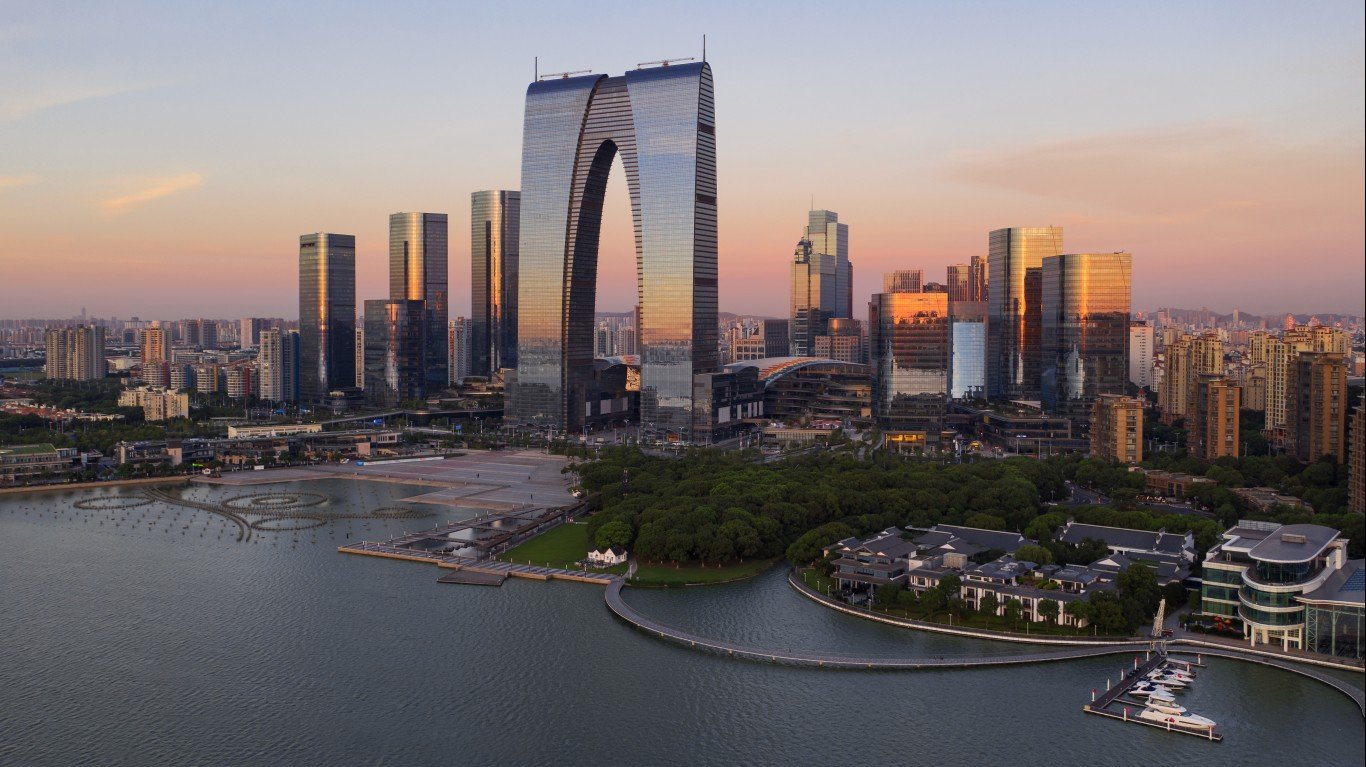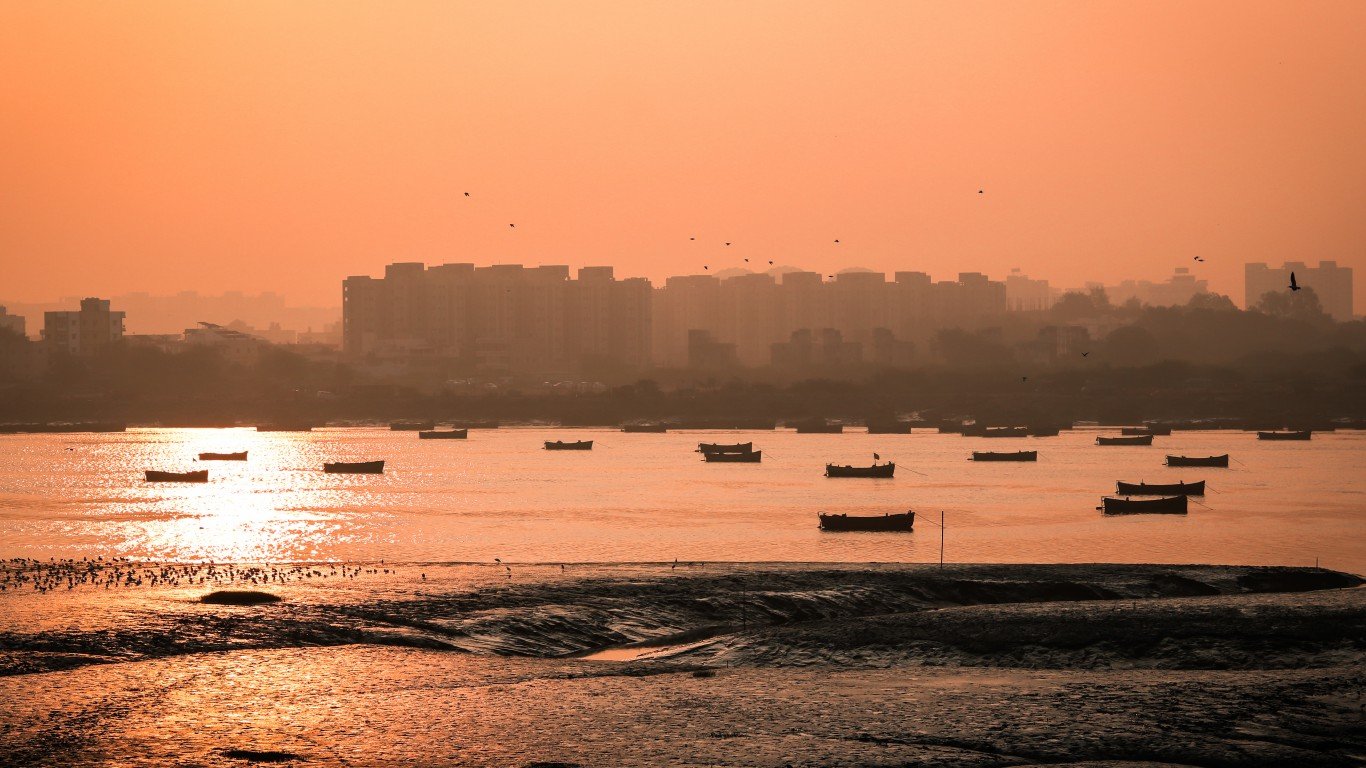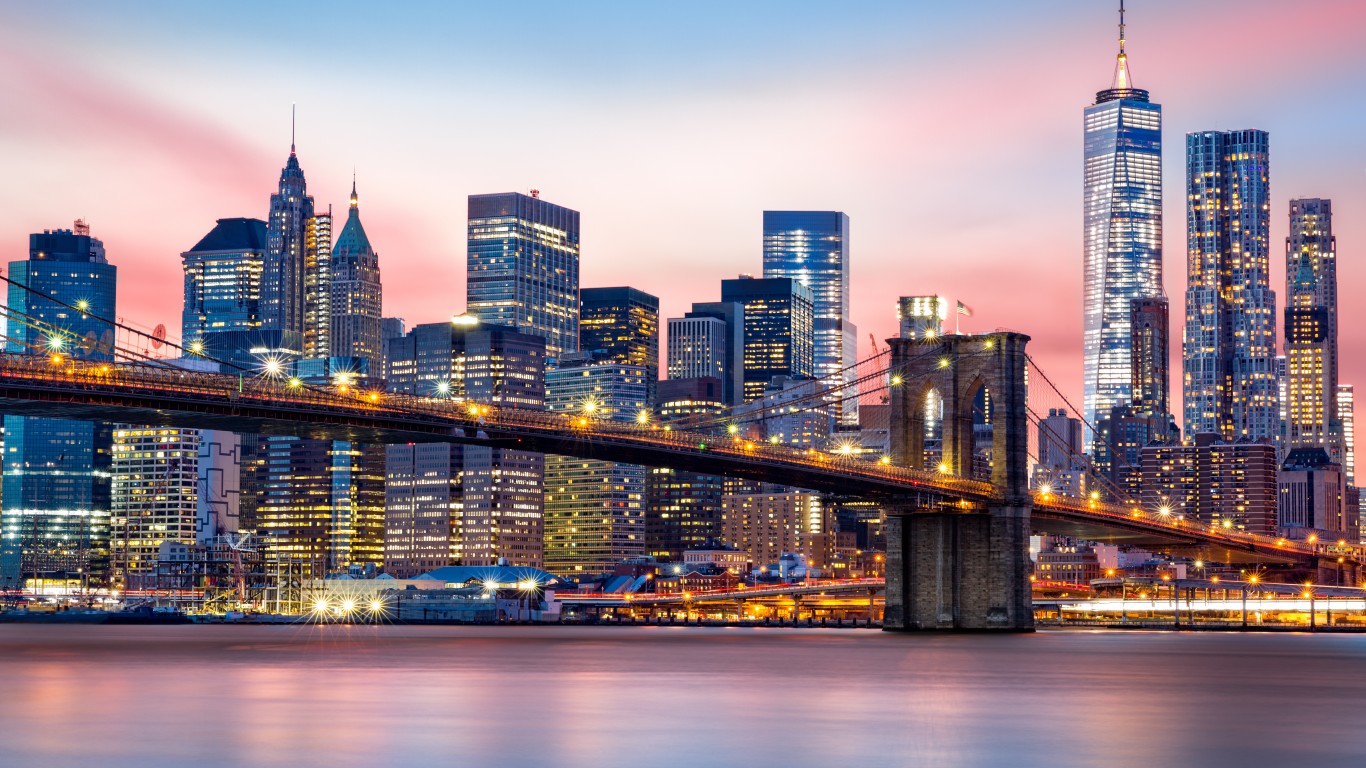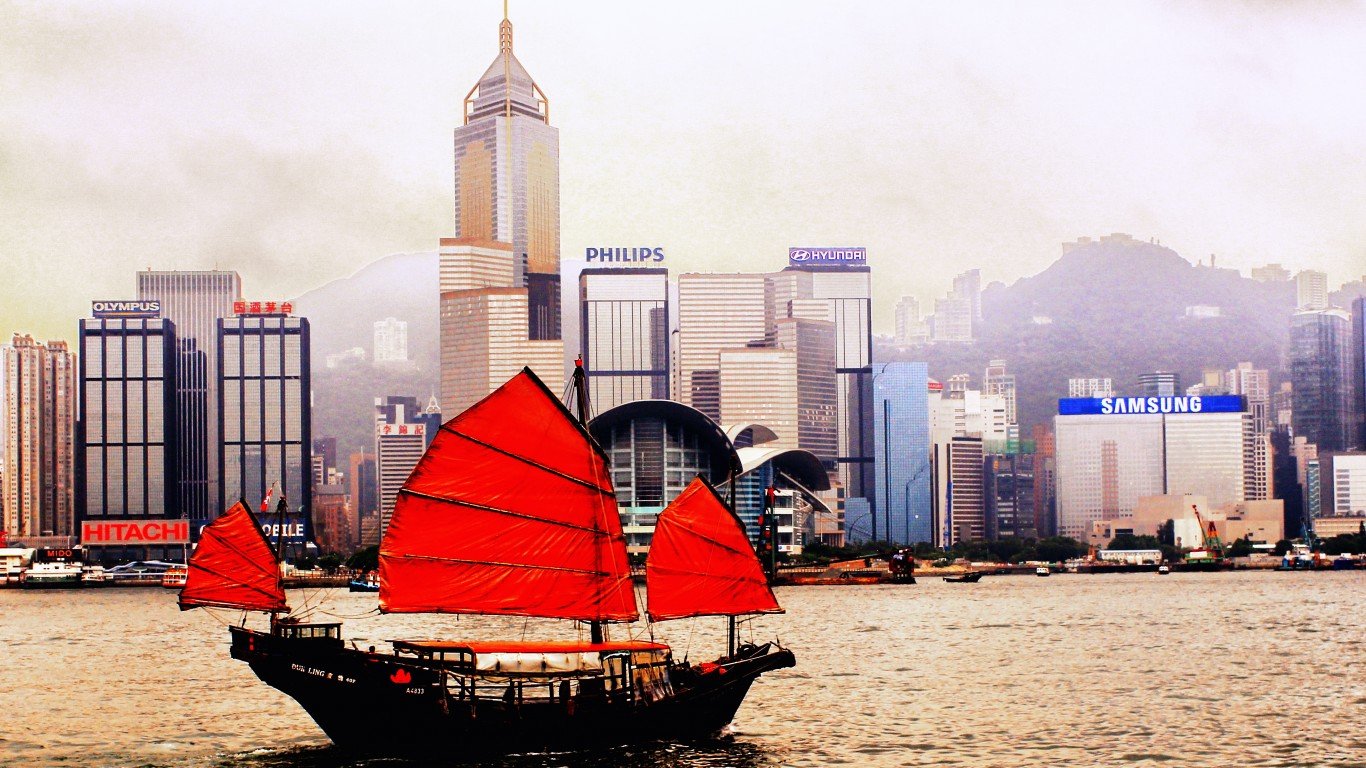
25. Suzhou, China
> Population (2021): 7.43 million
This major economic center, located in the Yangtze River Delta region, just west of Shanghai has numerous waterfronts, on Lake Tai and a number of smaller lakes, as well as along the Yangtze. It is considered to be at high risk for flooding, especially during the region’s increasingly strong and frequent storm surges.

24. Surat, India
> Population (2021): 7.49 million
“Indian city of Surat anticipates worst effects of climate change,” read the headline on a story seven years ago in The Guardian. A crowded city with a fast-growing population, Surat is a center for India’s diamond, textiles, and petrochemical businesses. It is estimated that as many as five million of its residents could be displaced by rising seas by the end of this century.
23. Hong Kong, China
> Population (2021): 7.6 million
Storm surges caused by frequent typhoons on the South China Sea are a major concern here, as is the sea level rise of about two-thirds of a foot by 2040 predicted by the Hong Kong Observatory. The situation isn’t helped by the fact that developers are building massive new residential units in low-lying areas considered by analysts to be at particular risk of flooding.

22. Hangzhou, China
> Population (2021): 7.85 million
A major electronics and high-tech center southwest of Shanghai (it’s the headquarters of Alibaba, known as the Amazon of China), Hangzhou sits on the Qiantang River, which feeds into Hangzhou Bay. The water level in the bay has risen about seven inches since 1978, and cyclones and inland flooding are common in the area.

21. New York, United States
> Population (2021): 8.23 million
According to a study by the New York Economic Development Corporation, by 2050, 37% of the buildings in Lower Manhattan will be at risk from storm surges, and by 2100 that number will rise to almost 50% — and 20% of the area’s streets could be subject to daily flooding. (In 2012, Hurricane Sandy inundated 17% of the city, claiming 44 lives.) A mitigation plan involving flood barriers, artificial sand bars, and a seawall has been formulated, but New York has 520 miles of coastline, so the project will be formidable to realize.







